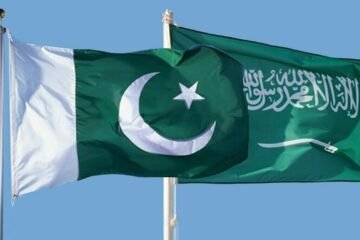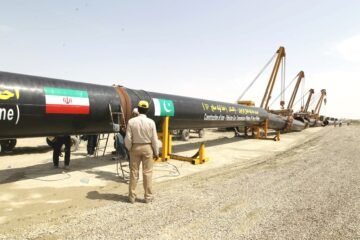Baloch’s Chauvinism: A Gloomy Sketch

After the influx of the East India Company in the subcontinent, south Asia became a delightful target to British hegemony. After few years- in 1666, Mir Ahmad Yar Khan was elected as khan: the head of the state. The bloc included Kandahar, Bandar Abbas, DG Khan, and Karachi. While under the leadership of his grandson, a unanimous army and administrative system were raised by khan Mehrab Khan. Moreover, Kalat Khanate was divided into two units: the Sarwan unit under Raisani and the Jhalawan unit under the Zehri chieftains. So their rule began. From 1805 until Britishers intervened in 1939, khan Nasir Khan’s heirs persisted independent.
An abrupt alteration- Russia’s advancement into Central Asia- steered up Britain’s interest in Balochistan. When Maharaja Ranjit Singh, of Kashmir, denied the British army a route to Kabul via Peshawar and Khyber Pass, the Britishers then signed a safe and secure passage agreement in 1838 with Mehrab Khan ( the khan ) to use Bolan Pass. However, referring to infringements, and breach of trusts, the Britishers sabotaged Kalat state, assassinating the ruler- Khan Mehrab Khan. However, his son, Mir Nasir Khan II was the deserving heir to ascend his father’s throne, so he became the head of the confederation. Having been succumbed to the deadliest assaults in the first Afghan war, the Britishers- In 1875- signed an agreement which aimed at honoring Kalat’s sovereignty. it was a formal way of pronouncing the Sardar’s rule, putting forward the tribal leaders for the interior security.
Beginning with the facts, the Balochs underwent a great loss when Goldsmid Line, in 1871, was depicted. Not only one-fourth of Balochistan was authorized to Persia, the additional border adjustments were also existed in 1896 and 1905 under the Anglo-Persian Joint Boundary Commission. In 1894, a crucial strip of land was too passed to Afghanistan under the Durand Line commitment.
Correspondingly, such similarities have further jeopardized Balochistan, arising the quest for Baloch nationalism at times especially when Baloch nationalists, Abdul Aziz Kurd, and Master Pir Baksh, launched a newspaper namely ‘Balochistan’, in Delhi. It has further been whispered that Baloch nationalism prevailed in 1927 when Mir Muhammad Yusuf Ali Khan Magsi and Abdul Aziz Kurd set up ‘Anjuman e Ittihad e Balochistan’, signifying the onset of a secular and non-tribal nationalist movement. A political ruckus was created In November when Magsi published an article of demands. He proposed many demands: A democratic system, free education for the Baloch, parity for Baloch women, improvement in Baloch culture, including the central Planck- independence of Balochistan. Owing to its sensitivity, the aforementioned points generated a political imbroglio. The impoverished Baloch was forced to retaliate in fits and starts.
The complacent Magsi was adamant to see an independent Balochistan. In 1934, an armed conflict- right after the departure of the British from Balochistan- was recommended to attain Kalat’s autonomy. Unfortunately, in 1935- Quetta’s earthquake, the most successful and determined nationalist departed towards his permanent abode. Afterward, in 1937, the Anjuman was renamed as the KSNP ( Kalat State National Party). It was pledged with the Khan of Kalat that Kalat state should have a treaty like Nepal with London. It is pertinent to mention that the Muslim League was not supported by the KSNP.
To measure the disaffection of Balochs’s, their language must be construed properly. During the 1970s, Baloch writers- an influential group of writers – led by Gul Khan Nasir, the then education minister, attempted to alter it to Roman script. Consequently, in 1990, the provincial assembly- With a lot of ramifications- endorsed the Balochistan Mother Tongue bill, rendering Balochi, Brahvi, and Pashto as mandatory mediums of primary-level education in their respective rural neighborhoods.
Despite the manifold barriers, Balochistan endured laborious travails to accomplish stability; it has gone through disappointment and fake commitments. In 1948, right after signing the instrument of accession to Pakistan, Ahmed Yar khan finished off the protracted autonomous Kalat state, putting an end to 300 years old union. After this, the brother of Khan- Abdul Karim khan- revolted in Jhalawan. With continued upheavals, in 1955, Iskandar Mirza- the president of Pakistan- declared Balochistan a component of West Pakistan under One Unit which acted as a driver to the second wave of rebellion undertaken by Nawab Nauroz Khan Zehri. But unfortunately, both prominent leaders- Abdul Karim and Nauroz Khan- were deceived and imprisoned by the dovish government who had guaranteed them safe passage earlier. But unfortunately, twists and turns arose when they were executed through military courts as traitors. It is pertinent to mention that Nauroz Khan’s son and his son’s colleagues were hanged to death…
Subsequently, the third wave of the Baloch revolution originated with the emergence of the 1962 elections. Numerous nationalists like Nawab Khair Baksh Marri and AttaUllah Mengal were voted. President Ayub khan- with great pressure – ousted them from the office, threatening them with death if they obstructed him. Anyhow, In 1973, Zulfiqar Ali Bhutto vowed provincial autonomy in return for the Baloch unanimity on the constitution. Same as Ayub Khan, he then terminated AttaUllah Mengal’s regime which led to the fourth wave of insurgency. Apart from all the waves, a recent – fifth insurgency wave- commenced in 2005 during Musharraf’s era; a female physician, from Sui, alleged an army officer on grounds that he has raped her. Nawab Akbar Khan Bugti termed this heinous act as a travesty of justice, deciding to fight for justice. But unfortunately, the struggle- that Bugti started in 2005- was torn to shreds; he was killed in a cave in 2006. Assassination of Nawab Akbar khan Bugti further ramped up hatred against the Pakistan army.
The sum and the substance are that Balochistan is the heart of Pakistan; however, challenges to CPEC and Balochistan will automatically worsen both the geographic as well as economic posture of Pakistan. The current dispensation- the PTI-led government- is following the path to foster good relations with the province. Although there are certain challenges to the country, yet a great focus is expected to be given to CPEC and Balochistan to stabilise the country. It is the need of the the hour that the wounds need to be healed as soon as possible. Previously, General Raheel Sharif’s strategic and technical treatment halted the insurgents; The current administration and the establishment have also done well to rebuild relations with Balochistan. Summing up the facts, the way to reconciliation, as proposed in NAP (National Action Plan) must be pursued. As it is the bitter truth that brotherhood can’t be attained through tyranny; it can be bonded through justice, provision of fundamental rights, accountability of offenders, trust, unity, faith, and discipline…
Say tuned to Baaghi TV for more. Download our app for the latest news, updates & interesting content!











Really I became happy to saw such amazing,knowledgeable and informative history of balochitan by najeebilum … Carry on Ilum I appreciate you. That your are doing best work…
Good